If you like Milk Snakes and Hognoses, check out Xenodon pulcher – the snake that looks like both! Read our Tricolor Hognose Snake Care Sheet to learn more.
Last updated on February 1st, 2023 at 09:35 am
Tricolor Hognoses are quite uncommon in captivity – but not hard to take care of. Nonetheless, at Ballpythonbreeder.co.uk we always like to get first-hand husbandry information from breeders. That’s why for this post we’ve teamed up with Beth Hope, of Hope’s Hoggies, to create an experienced-based Tricolor Hognose Care Sheet.
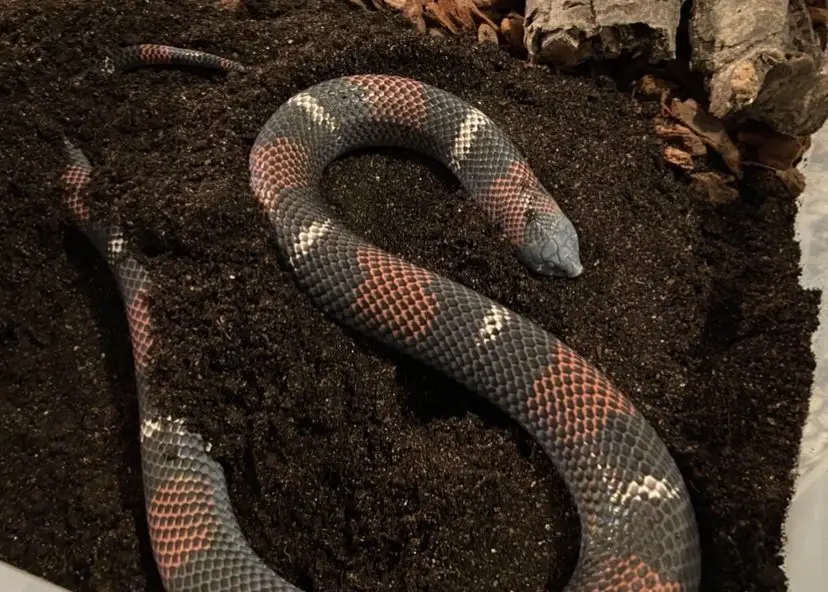
Tricolor Hognose Size
One thing that makes this species attractive is their small size. In fact, I use size as a criterion when recommending the best snakes for beginners. Though Tricolor Hognoses are relatively uncommon, I think that they will eventually fall into this category given that they are always around 2ft (60cm) long when fully grown.
Obviously, this can vary a little, and females are bigger than males because they need more room to carry eggs. Overall, however, Tricolor Hogs tend to be the same size as your average male Western Hognose (Heterodon nasicus).
Baby Tricolor Hogs are tiny and can be under 6 inches (15cm) in length.
Now that we know how big they get, let’s take a look at their lifespan, temperature, humidity, and other husbandry requirements…
What is a Tricolor Hognose?
This species lives in subtropical to temperate, humid regions of south America, including Paraguay, southern Brazil, and northern Argentina. In these regions, it is able to exploit a similar burrowing lifestyle to the North American Hognoses (Heterodon spp.) thanks to the ground conditions.
When it comes to body shape, Tricolor Hognoses have roughly the same morphology as the Western Hoggies most of us are familiar with. In fact, their only real physical difference is that they have smooth scales, rather than keeled.
Obviously, their main standout feature is the upturned rostral scale that gives them their name. Using this tool, they probably route out anuran prey in a similar way to Eastern Hognoses, and that is the most likely reason for them to have such a similar appearance (shape-wise, that is).
When it comes to colour, Tricolor Hognoses are typical Coral Snake mimics, having the same black, red, and yellow or white bands as Milk Snakes. This is why you may hear them referred to as “False Coral Snakes”.
At this point, it’s important to note that these snakes are not as closely related to Heterodon species as you might expect. While they are in the same subfamily as Heterodon species, this is a huge group of snakes, and they are in a separate part of the subfamily (called a clade).
To put this in perspective, a Tricolor Hognose (Xenodon pulcher) is more closely related to a False Water Cobra (Hydronastes gigas), than it is to a Western Hognose (Heterodon nasicus).
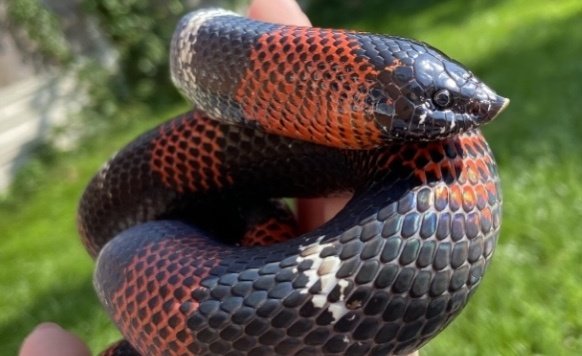
Taxonomical comparison between Xenodon pulcher and Heterodon nasicus
| Classification | Tricolor Hognose Snake | Western Hognose Snake |
| Family | Colubridae | Colubridae |
| Subfamily | Dipsadinae | Dipsadinae |
| Clade | Xenodontinae | Carphophiinae |
| Genus | Xenodon (formerly Lystrophis) | Heterodon |
| Species | Xenodon pulcher | Heterodon nasicus |

Tricolor Hognose Venom
Like a good deal of related species, Xenodon pulcher is an opistoglyphous species. This means that they have enlarged, grooved fangs at the back of their mouths. These teeth deliver a fairly weak venom and is the reason you might hear people refer to them as “rear-fanged”.
For this reason, I would advise that you use gloves when feeding these snakes. Most reports of their bites say that they are itchy and intensely annoying for 24 to 48 hours. This is similar to bites from the False Water Cobra that we discussed earlier.
Overall, Tricolor Hognoses really aren’t dangerous. Nonetheless, just like a bee sting, there’s always a slim chance you could be allergic. Any bite from any venomous creature should be monitored closely.
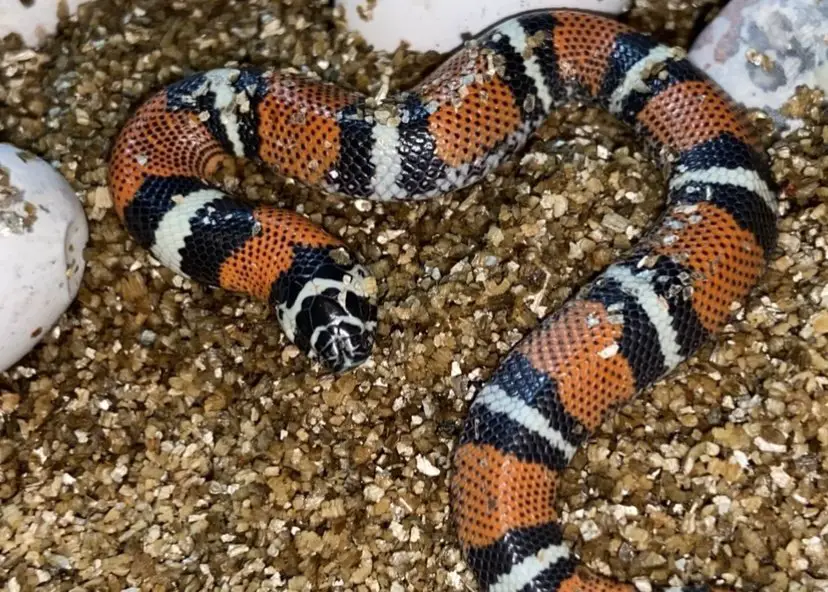
Lifespan
One area where the Ticoloror Hognose lets us down a little is lifespan. Most snakes of both sexes live for seven or eight years, with nine years being the upper limit. This is quite short when compared to Corn Snakes, and very short compared to Ball Pythons and Boa Constrictors – which can live to over forty.
The reason for their shorter lifespan is not entirely certain at this point. Notwithstanding, it is always possible that your Hognose could be the one to set a new record! Pay attention to their hygiene and give them food from a respected rodent breeder. This will promote good health and give them the best chance possible of getting past the average age.
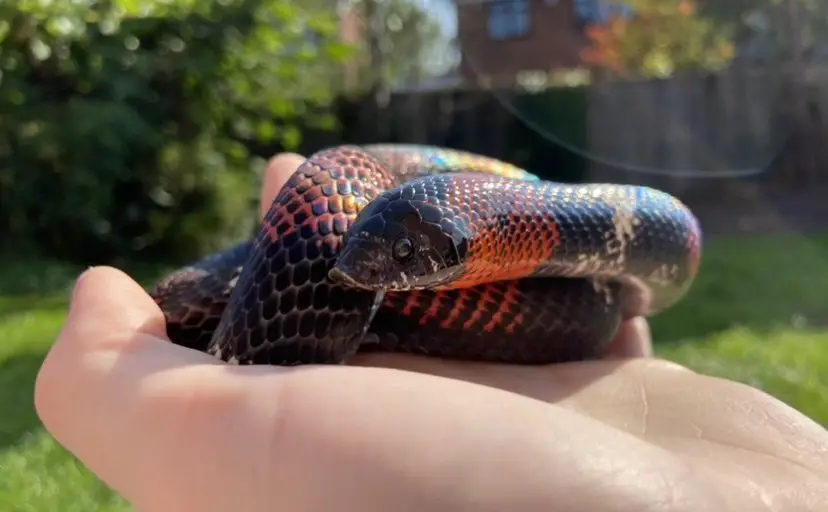
Morphs
As far as morphs go, there aren’t many available yet. This species is highly variable, however. If you look around and speak to breeders you can regularly find individuals that are extra light or mostly black, for example.
At the moment, Tricolor Hognose breeding is increasing and will undoubtedly produce some morphs in years to come.
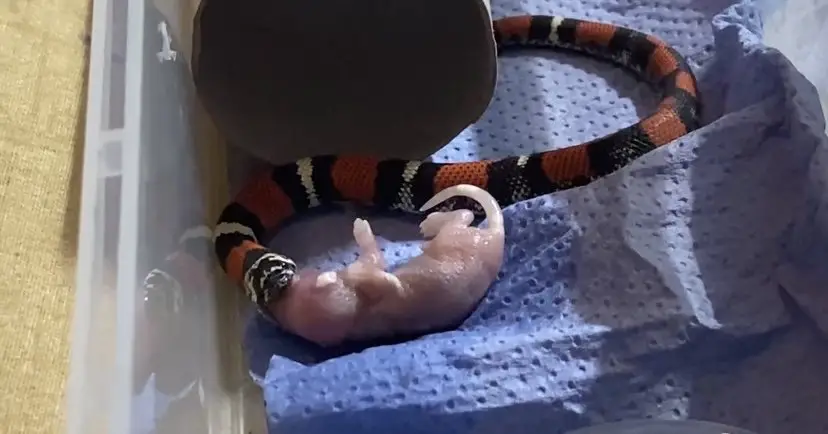
Tricolor Hognose Temperature
According to Beth, the temperature to aim for is around 90f (32) on the warm end and around 70f (21) on the cool end. This thermal gradient will allow your snake to choose the temperature it wants to expose itself to and help it to regulate its body temperature.
Generally speaking, it’s best to make the warm area cover roughly one third of the enclosure. It’s also a good idea to provide hiding places and adequate substrate depth (3 or more inches/7.5 or more cm) across the whole temperature gradient, not just in the warm end.
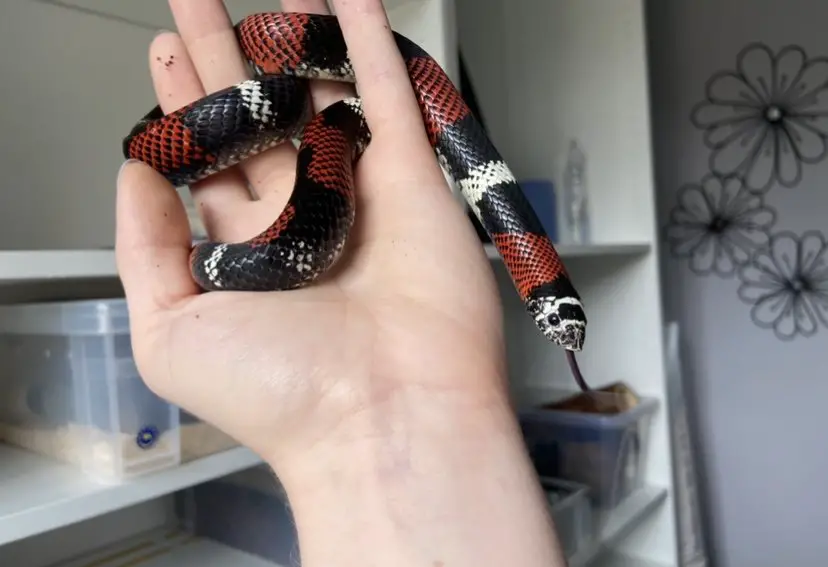
What heating appliance should I use?
When using plastic tubs as an enclosure, heat mats are by far the best heating appliance. If, on the other hand, you choose to go with a vivarium then a ceramic heat emitter, heat lamp, or deep heat projector will work well. (We’re going to discuss enclosure type later in the care sheet, so keep reading for more details on this)
Before we go any further, take note that for a heat mat you will need a “Mat Stat” (on/off) or pulse proportional thermostat. For a heat lamp, you will need a dimming thermostat. For a ceramic heat emitter, deep heat projector, reptile radiator or high-power heat mat, you will need a pulse proportional thermostat. Do not attempt to use any heating appliance without a thermostat!
To install a thermostat and mat on a tub, simply sit the mat flat, put the thermostat probe on top of the mat, and then the tub on top. Mat → Probe → tub.
Or, to use a thermostat with an overhead heat source like a heat lamp – place the probe in mid-air, roughly halfway up the wall of the enclosure. It should be just next to where the heat lamp is but not directly under it.
To make sure you Hognose’s temperatures are correct, put a digital thermometer probe under the substrate in the warm end if using a mat, or on its surface if using a lamp, heat emitter or deep heat projector. It is also recommended that you invest in an infrared temperature gun to double check the temperature on the surface of the substrate.

Humidity and water
These snakes prefer slightly more humid set ups than any other more common type of Hognose. You should aim for 60-65% ambient humidity and provide a large water bowl to help maintain it. Water should be changed at least once a week.
To help with shedding, it’s also a good idea to provide a humid hide. This can be made out of any small plastic tub. You simply fill it with damp sphagnum moss and make a hole for an entrance. Another alternative is to simply spray the substrate well with water when your snake’s preparing to shed.

Light
Though they may be active during they day, Xenodon pulcher snakes are notorious burrowers and do not require UV lighting. Notwithstanding, they do need light on a 12 hour cycle. This can simply be light from a window, or the ambient light in the room you keep them in.
Providing consistent hours of daylight like this is simply to stop them from trying to brumate and going off food. Even to snakes that don’t bask, a change in daylight means a change in season.
Only alter their daylight hours if you intend to breed them. In this case, the change in daylight hours through your window will be perfect (if you live outside of the tropics that is).
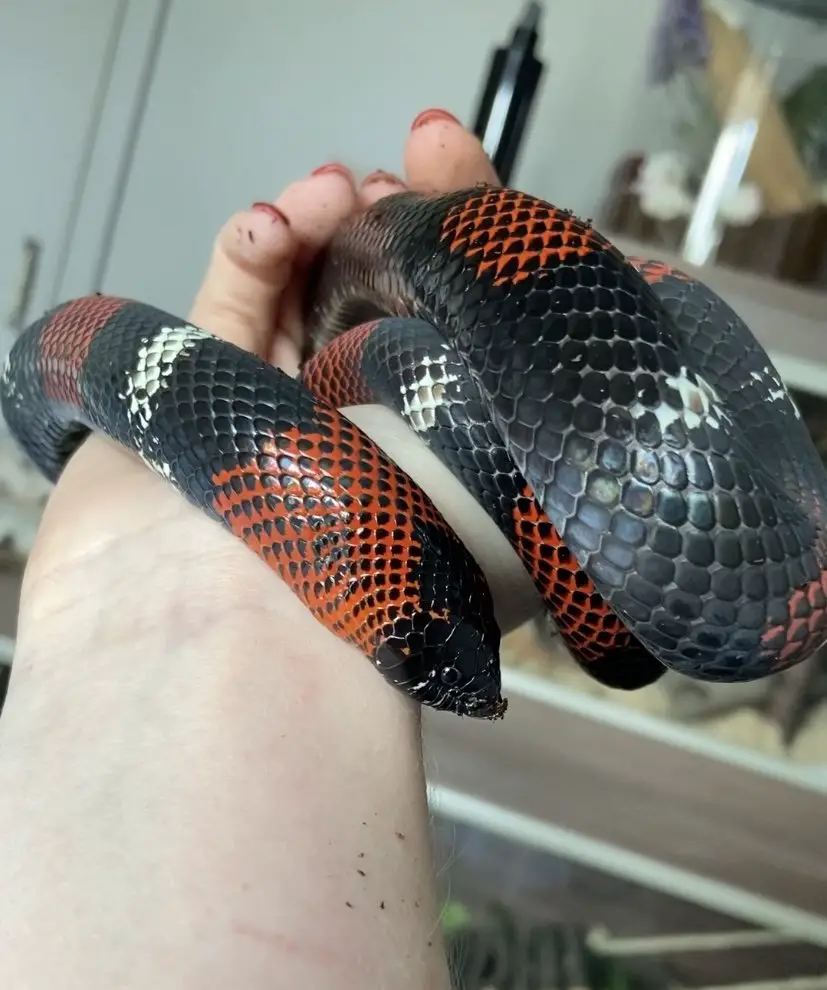
Tricolor Hognose Snake Enclosure
Adults seem to do well in vivariums or tubs, so long as they aren’t too big, and they feel safe. Babies that are well started can be housed in a small tub or faunarium that has a volume of around 5l (5-5.5qt). These are usually 10-12 inches long (25-30cm). Very young hatchlings can be housed in extra-small setups like the photo below so that you can easily monitor them in their first few weeks.
Adults need an enclosure 24-36 inches long (60-90cm), by 12-18 inches (30-45cm) deep and 8-12 (20-30cm) inches tall. Whether you choose a viv or tub, I would avoid any enclosure with a mesh top as these make it very hard to maintain humidity. They are more suited to desert species like the Rosy Boa, for example.

Substrate and decorations
The best substrates are coco coir/fibre (like Eco Earth or Bed-A-Beast), sand and potting soil mix or orchid bark.
As with any snake species, avoid cedar and pine which are toxic. To help maintain good substrate humidity, you can sprinkle clumps of sphagnum moss over the top of it and mist once or twice week.
When it comes to decoration, pieces of cork bark may be appreciated as hiding places. These should be available on both sides of the enclosure. Alternatively, you can use cocunut shells. Whichever you choose, make sure that hides of some description are always available.
What do Tricolor Hognoses Snakes eat?
Tricolors seem to do well on a staple of mice. These are the most appropriate and most widely available food source for them.
Babies can be started on day-old pinkie mice. These may appear large in comparison to a baby Hognose, but they are more than capable of swallowing them. Occasionally some refuse to feed on rodents, so make sure a baby is already feeding before you buy!
Generally, these difficult babies can be enticed into feeding on pinkie mice by scenting them with frogs’ legs. This is the method that Beth uses with a high degree of success.
Ideally, a baby Tricolor Hognose Snake should have eaten 4 or 5 meals on its own before being sold to you: it is the breeder’s responsibility to get on them on the right track.
In their first few months feed them every 5 days. Well grown on juveniles and adults should be fed every 7 days. Generally, 1 large mouse is enough throughout their lives. Be aware that some have a very strong feeding response -use feeding tongs!
If you ever decide to breed these snakes, remember that the females will need feeding more often when producing eggs.
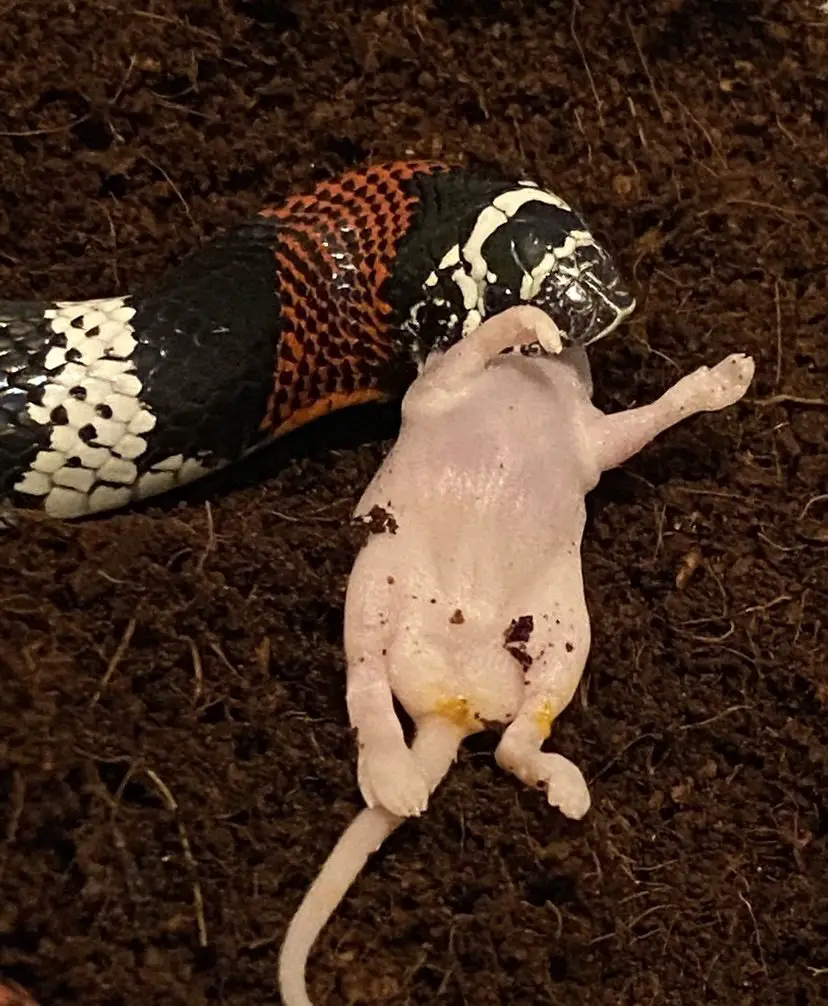
Handling
Overall, Tricolor Hognoses are pretty chilled out. They are not an aggressive species and respond well to gentle handling. I would advise you to handle them for a few minutes, two or three times a week. If they get distressed or frantic, just put them back and try again a few days later. Over time they will realise you aren’t a threat and become nice, calm captives.
As with a lot of small species, the babies are quite squirmy, so be careful not to drop them!
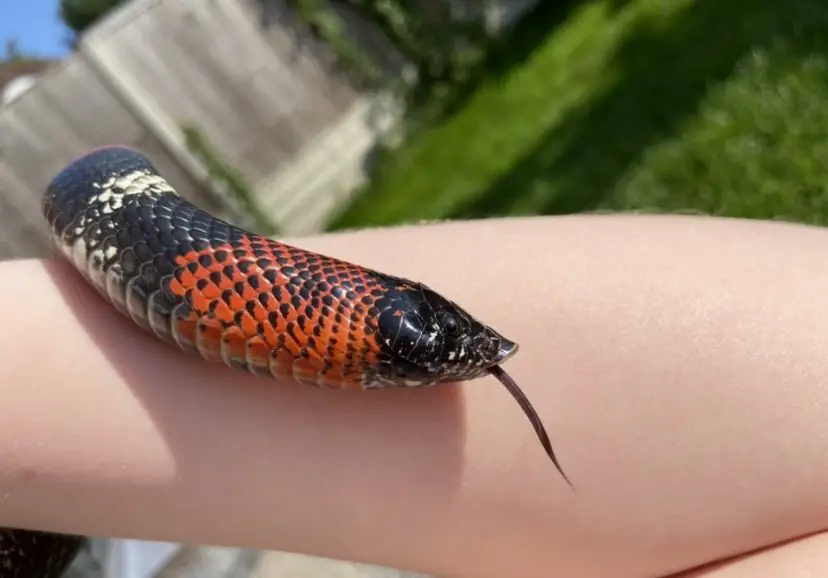
Tricolor Hognose Snake for sale and price
Because they lay a good 8 or more eggs a year and can lay several clutches, the price of these snakes is coming down steadily. Here in the UK, you can find them for anywhere from £150 to £300.
In the US, you should expect to pay $200 to $450. This is a higher price than a lot of popular snakes, but this is because Tricolor Hognoses still have a limited presence in captivity.

Table: Tricolor Hognose Care Summary
Turn your device to landscape view if you have trouble seeing the whole table…
| Common names: | Tricolor Hognose, Banded Hognose, False Coral Snake |
| Scientific name: | Xenodon pulcher |
| Distribution: | Subtropical and temperate South America |
| Activity rythm: | Mostly diurnal |
| Habits: | Fossorial |
| Habitat: | Areas with humid soil |
| Temperature: | 90f (32) on the warm end and around 70f (21) on the cool end |
| Humidity: | 60-65%, increase during shedding |
| Favourite food: | Mice |
| Enclosure size: | – 10-12 inches long (25-30cm) for hathclings – 24-36 inches long (60-90cm), by 12-18 inches (30-45cm) deep and 8-12 (20-30cm) inches tall for adults |
| Lighting needs: | UV not necessary but ambient light beneficial |
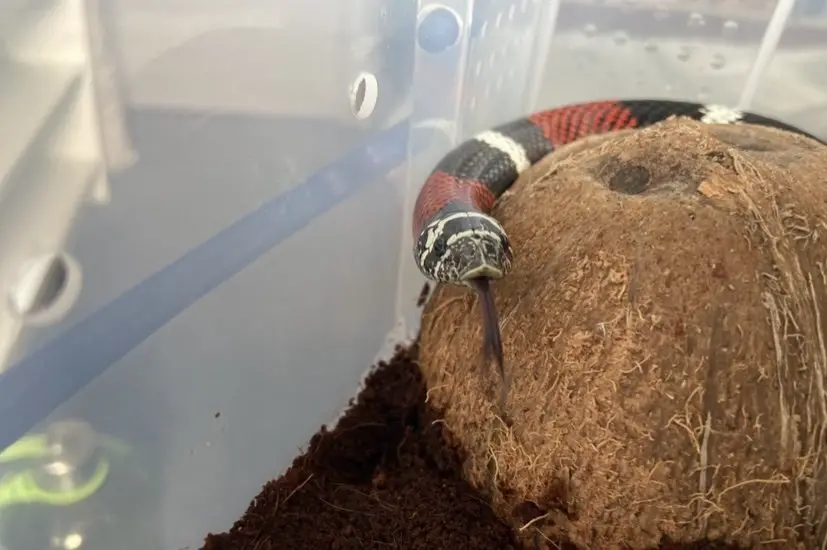
Key points to remember about the Tricolor Hognose:
- Tricolour Hognose Snakes are good pets, but they are not the same as Western Hognoses. Tricolors need a higher humidity level of 60-65%, in contrast to roughly 40% Westerns. They also require a slighter lower temperature range of 70 degrees fahrenheit on the cool side of the enclosure.
- These are beautiful, but mostly fossorial snakes: you should expect them to spend a long time burrowing under their substrate.
- “Tricolor Hognose” is just one of their common names. They are also known as False Coral Snakes or Lystrophis pulcher (their old scientific name).
- If you use a terrarium in combination with a ceramic heat emitter, it’s best to use slightly moistened substrate, or provide a humide hide to offset the negative effect of this type of heating on humidity levels.
- Young snakes should already be feeding when you buy them. If you have any trouble getting them to eat, the best thing to try is pinky mice scented with frogs’ legs.
